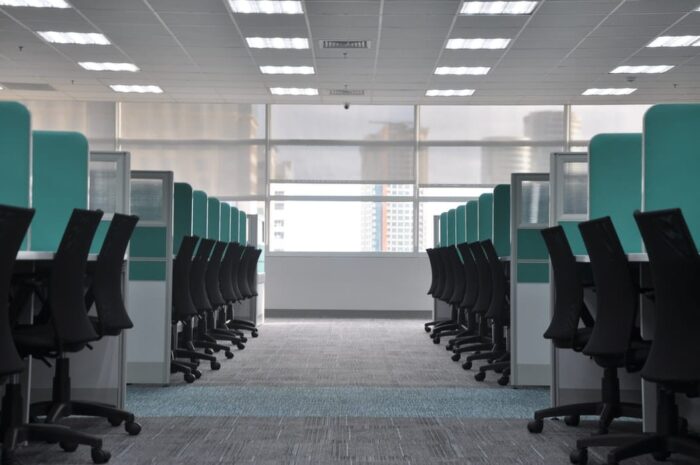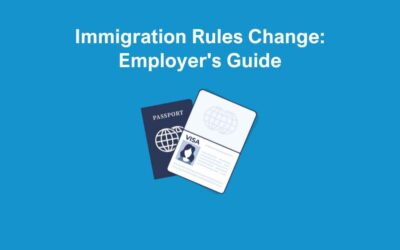Last week, we shared general guidance on how to recall employees back from furlough. We are seeing more and more businesses do this. In addition, in Scotland we know lockdown restrictions will be in place for at least another 3 weeks, businesses are making plans to get back to some kind of normality.
We’re seeing some good practice around workplace risk assessments, processes around social distancing and employees continuing to work from home, where possible.
I have been following developments in Europe and Asia around what the workplaces are doing there, and I’m fortunate to have a friend who works for a global business who has shared some details on what her workplace now looks like in these countries.
We are expecting an announcement from the Prime Minister on Sunday night, where an easing of the lockdown measures will be discussed and hopefully an insight into what this means for employers.
Here are some tips to consider to allow you to operate safely during the lockdown measures. If you are recalling employees from furlough, then these steps will ensure you are raising awareness on H&S and giving your employees confidence the workplace is safe.
General Guidance
- Provide equipment for staff to work effectively and safely from home where possible
- Face employees away from each other or side-to-side where possible, so they are not face-to-face
- Stagger shifts and break times
- Provide staff with packaged meals instead of using canteens
- Provide hand-washing facilities or hand sanitisers at entrances and exits
- Change seating, tables and layouts so staff work further apart and reduce face-to-face interaction
- Reduce maximum occupancy for lifts and regulate use of corridors, lifts and staircases
- Provide hand sanitiser for the operation of lifts and encourage the use of stairs
- Monitor the wellbeing of colleagues working from home and offer support
- Get staff to change into uniforms on site, provide storage for clothes and bags, and wash uniforms on site rather than at home
- Have separate entry and exit points to the building, and introduce one-way flow routes
- Reduce congestion by having more entry points
- Use floor tape or paint to mark out two-metre distances
- Discourage non-essential trips within buildings and sites
- Reduce job and location rotation – this could involve assigning employees to specific floors
- Provide more parking or bike racks
- Provide protective screening for staff in receptions or similar areas
- Use screens to create physical barriers between people where possible
- Provide alternatives to touch-based security devices such as keypads
Offices
- Where possible, office staff should continue to work from home, although those in roles critical for business or who cannot work from home due to personal circumstances can go in
- Businesses should plan for the minimum number of people to be on site
- Avoid use of hot desks
- Use remote working tools to avoid in-person meetings
- Avoid transmission during meetings, for example by not sharing pens and other objects
- Only absolutely necessary participants should attend meetings
- Provide hand sanitation in meeting rooms
- Hold meetings in well-ventilated rooms, where possible
- Use outside areas for breaks
- Limit use of high-touch items and shared office equipment
Hotels and restaurants
- All food and drink outlets should serve takeaways only, and seated restaurants and cafe areas must be closed
- Bar areas must be closed
- Use signage to make clear these areas are closed
- Minimise the number of people in kitchens and reduce interaction between kitchen workers and other workers, including during breaks
- Space workstations two metres apart as much as possible
- Consider cleanable panels to separate workstations in bigger kitchens
- Minimise access to walk-in pantries, fridges and freezers
- Minimise contact at “handover” points with other staff, including delivery drivers
- Use a “grab and go” service or room service for hotel guests
- Provide hand sanitiser for visitors
- Avoid crowded reception areas – stagger check-in and
- Carry out essential services and contractor visits at night where possible
- Reduce the number of guests who can stay in a single room, particularly in dormitories
- Interact with guests via phone, emails and guest apps
- Encourage customers to order online or via phone to avoid queues
- Serve customers in walk-in takeaways with tills two metres away from the kitchen, ideally behind a screen and separated from the kitchen by a partition or wall
- Use contactless payments
- Mark out two-metre distances for customers queuing
- Enhance cleaning and providing signage on good hygiene practices
- Limit access to premises for people waiting for takeaways. Ask customers to wait in their cars
Workers in other people’s homes
- No work should be carried out in a household where a person is isolating or has been asked to shield
- Avoid face-to-face contact with vulnerable people in households
- Contact households ahead of the visit to discuss how to minimise risk
- Wash hands on arrival and maintain social distancing
- Travel to the site using your own transport where possible, or limit the number of people per vehicle if this cannot be avoided
- Match workers to households local to them to minimise transportation
- Workers should bring their own food and take breaks outside
- Limit time spent in close proximity to no more than 15 minutes
- Identify busy areas across the household where people travel to, from or through, for example, stairs and corridors
- Ask that households leave all internal doors open
- Allocate the same worker to the same household each time there is a visit
- Limit the number of workers in a confined space
- Avoid direct contact where possible
- Use electronic payment methodsFactories and warehouses
- Limit the number of people in company vehicles
- Regularly clean work areas, equipment, tools, vehicles and reusable delivery boxes
- Clean equipment, tools and vehicles after each use and at the end of each shift
- Regularly clean objects and services
- Service and adjust ventilation systems
- Remove waste at the end of a shift
- Provide hand sanitiser for employees to use while boarding vehicles or handling deliveries
- Minimise use of portable toilets
- Keep a record of visitors
Shops and branches
- Define the number of customers that can reasonably follow two-metre social distancing within the store, taking into account total floorspace and busy areas
- Limit the number of customers at any one time
- Suspend customer services which cannot comply with social distancing
- Encourage customers to shop alone
- Update plans for store traffic and queue management, and use outside areas for queuing such as car parks
- Shopping centres should regulate the number of customers
- Inform customers who are accompanied by children that they are responsible for supervising them at all times
- Continue to keep customer restaurants and/or cafes closed until further notice, unless offering hot or cold food to be consumed off the premises
- Provide guidance to people on arrival
- Restock/replenish outside of store operating hours
Working outdoors
- Only workers deemed necessary to carry out physical work or supervision should physically attend
- In an emergency (for example, an accident, fire, break-in or trespass), people do not have to stay two metres apart if it would be unsafe
- Provide signage to inform the public what work is taking place and to remind them to maintain social distancing
- Provide any necessary training for people who act as hosts for visitors
Working in a vehicle
- Make sure vehicles are well-ventilated
- Reduce the number of employees at base depots or distribution centres
- Schedule collection times
- Avoid interacting with the driver when loading goods onto vehicles
- Minimise contact during payments or exchange of documentation
- Regularly clean vehicles
- Make sure the same people are paired together if they must be in close proximity
- Arrange non-contact deliveries where possible
- Limit exposure to large crowds and rush hours
- Have single employees load or unload vehicles
- Have drivers stay in their vehicles if possible
- Prepare for goods to be dropped off to a previously agreed area to avoid transmission, eg. click and collect
- Keep hand sanitiser or wipes within vehicles
If you would like more general guidance for your workplace, contact us now.







